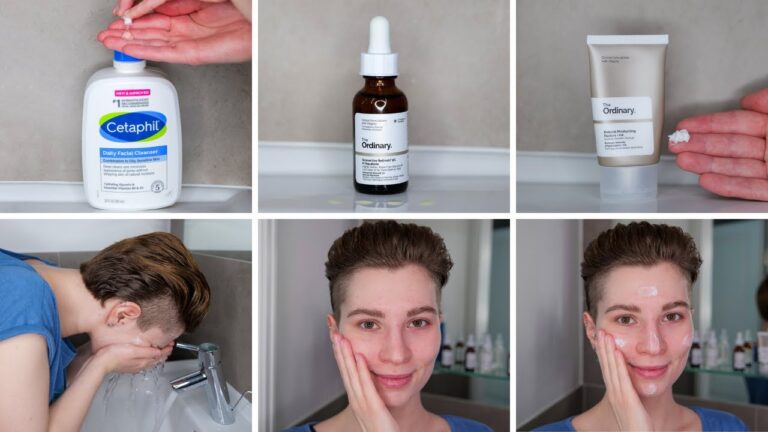Unlock the Benefits of Radiant Skin with Retinol Oil: A Comprehensive Guide
Retinol Oil: The Miracle Ingredient for Youthful Skin
If you’re looking for a skincare ingredient that promises to transform your skin, look no further than retinol oil. This potent derivative of vitamin A has been touted as a powerful anti-aging ingredient, thanks to its ability to stimulate cell turnover and boost collagen production. In this article, we’ll take a deep dive into what retinol oil is, how it works, and how to incorporate it into your skincare routine.
What is Retinol Oil?
Retinol oil is a type of retinoid, which is a group of compounds derived from vitamin A. Retinoids have been used for decades to treat acne, psoriasis, and other skin conditions. However, it’s their ability to reduce fine lines, wrinkles, and other signs of aging that has made them so popular in skincare.
Retinol is one of the most studied forms of retinoids, and is also one of the gentlest. It works by binding to retinoic acid receptors (RARs) in the skin, which then activate genes responsible for producing collagen and increasing cell turnover. This results in skin that looks smoother, brighter, and more youthful.
How Does Retinol Oil Work?
Retinol oil works by penetrating the skin’s outermost layer, the stratum corneum, and reaching the deeper layers where collagen is produced. Once it’s there, retinol stimulates the production of collagen by activating genes responsible for producing the protein. Collagen is essential for maintaining the skin’s elasticity and firmness, and is responsible for preventing wrinkles and sagging.
Retinol oil also increases cell turnover, which is the rate at which new skin cells are produced and old ones are shed. By speeding up this process, retinol oil helps to slough off dead skin cells, revealing brighter, smoother, and more even-toned skin.
How to Use Retinol Oil in Your Skincare Routine
If you’re new to retinol, it’s important to start slowly and build up your tolerance over time. Retinol can be irritating to the skin, especially at higher concentrations. Begin by using a low-strength retinol oil, such as The Ordinary’s Granactive Retinoid 2% Emulsion. Apply a pea-sized amount to your face at night, after cleansing and toning. Follow with your moisturizer.
As your skin gets used to the retinol, you can gradually increase the strength of the product. Look for retinol oils that contain at least 0.5% retinol, such as Paula’s Choice 1% Retinol Treatment. Apply to clean, dry skin at night, and follow with your favorite moisturizer.
It’s important to note that retinol can increase your skin’s sensitivity to the sun, so always wear sunscreen during the day, even if you’re staying indoors. Look for a broad-spectrum sunscreen with an SPF of at least 30, such as Neutrogena Ultra Sheer Dry-Touch Sunscreen.
Retinol Oil and Other Skincare Ingredients
Retinol oil can be used in combination with other skincare ingredients, but it’s important to be cautious. Avoid using retinol with other exfoliating ingredients, such as glycolic acid or salicylic acid, as this can increase the risk of irritation. Instead, try pairing retinol with hydrating ingredients, such as hyaluronic acid or ceramides, which can help to soothe and nourish the skin.
If you’re pregnant or breastfeeding, consult with your doctor before using retinol oil. Although retinol is generally safe and effective for most people, it can be harmful to unborn babies.
In Conclusion
Retinol oil is a powerful anti-aging ingredient that can transform your skin. By increasing collagen production and cell turnover, retinol can help to reduce fine lines, wrinkles, and other signs of aging. If you’re new to retinol, start slowly and build up your tolerance over time, and always wear sunscreen during the day. With regular use, retinol oil can help you achieve a more youthful, radiant complexion.
Most searched products:
Does Sephora Support Israel? Answering Your Questions
2021’s Ultimate Guide to VIT Direct Reviews You Can’t Miss!
Capsaicin Cream Boots
Benefits of Using Glycolic Acid for Dandruff Treatment
Get Thick & Luscious Lashes With Sins N Lashes Serum: Our Honest Review!
The Explosive Reaction: Sodium Hydroxide and Hydrochloric Acid
Revitalize Your Skin with the Best Wrinkle Serum for a Youthful Glow
Finger Splint Boots
10 Best Face Cleaners for a Clear and Glowing Complexion
The Ultimate Guide to Knowing When to Use Glycolic Acid













